Didier Faustino’s honeycomb-like design for Alumnos 47 art foundation revealed

Young and dynamic Mexican contemporary art foundation Alumnos 47 is about to get a new home, courtesy of French architect and artist Didier Faustino.
The Mexico City-based organisation has been house in an existing building in the city's San Miguel Chapultepec district for a few years, but has been slowly but surely outgrowing its current home. Operating as an art space with a mobile library and artist residency program and a growing art-book collection, Alumnos 47 soon required further space to cater for its needs. So in 2011 president Moisés Cosio launched a global search to find the right architect to build an extension to their base, which would be located in an adjacent plot.
The new site sits perpendicular to the current one, meaning that the old and new sections could have a fairly challenging relationship, meeting by only a few metres. Yet this didn’t stop Faustino, who was selected from a rich, international pool of architects by a team including advisors such as writer and curator Joseph Grima and the Van Alen Institute's David van der Leer. The architect's flair stood out and he did not disappoint; his ingenious solution for the site outlines a fluid, organic volume that bridges the two sites, sitting on their intersection.
Fast forward five years and the new building has just got its planning permission granted and is about to start on site. Faustino envisioned a building that is ‘open and welcoming’, he explains, pointing out that he was lucky enough to be given almost carte blanche from the foundation in terms of its overall look and direction.
The architect drew inspiration from the honeycomb shape, which he is planning to translate into architecture through poured in situ concrete and glass. In Mexico’s hot climate, natural ventilation was key, and the open plan spaces and strategically placed openings ensure there’s plenty of fresh air inside. Equally central to the concept was the building’s public face – a fact Faustino highlights by carving out lots of open, public space in the building.
'I see the needs of this foundation as a real organisation composed of multiple bodies. The building has to able to welcome a true living entity, which is acting like a living system,' he explains. 'That's why my two first inspirations were, from one hand the beehive and from the other hand the creation of the corals, their principle of development. We can say that I was inspired by the construction of the animal societies's architecture systems.'
The building is set to include a library and reading space, a gallery, additional offices for the foundation, a bar, storage, lecture and meeting rooms. Full completion is currently planned for 2018.
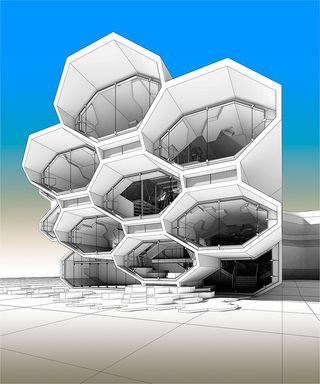
The honeycomb-inspired building was designed to be an open and welcoming extension to the foundation’s current headquarters nearby

Inside, the program includes gallery space, a library and reading room, storage, offices, meeting and lecture areas
INFORMATION
For more information visit Didier Faustino’s website
Wallpaper* Newsletter
Receive our daily digest of inspiration, escapism and design stories from around the world direct to your inbox
Ellie Stathaki is the Architecture & Environment Director at Wallpaper*. She trained as an architect at the Aristotle University of Thessaloniki in Greece and studied architectural history at the Bartlett in London. Now an established journalist, she has been a member of the Wallpaper* team since 2006, visiting buildings across the globe and interviewing leading architects such as Tadao Ando and Rem Koolhaas. Ellie has also taken part in judging panels, moderated events, curated shows and contributed in books, such as The Contemporary House (Thames & Hudson, 2018), Glenn Sestig Architecture Diary (2020) and House London (2022).
-
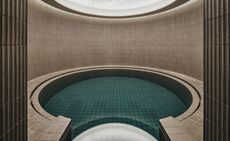 Find yourself at Six Senses Kyoto, the brand's breathtaking Japan debut
Find yourself at Six Senses Kyoto, the brand's breathtaking Japan debutSix Senses Kyoto opens its doors boasting tranquil, luxurious interiors by Blink Design Group
By Danielle Demetriou Published
-
 Shigeru Ban’s mini Paper Log House welcomed at The Glass House
Shigeru Ban’s mini Paper Log House welcomed at The Glass House'Shigeru Ban: The Paper Log House' is shown at The Glass House in New Canaan, USA as the house museum of American architect Philip Johnson plays host to the Japanese architect’s model temporary home concept
By Adrian Madlener Published
-
 Artist Mickalene Thomas wrestles with notions of Black beauty, female empowerment and love
Artist Mickalene Thomas wrestles with notions of Black beauty, female empowerment and love'Mickalene Thomas: All About Love’, a touring exhibition, considers Black female representation
By Hannah Silver Published
-
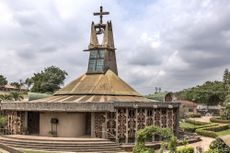 The pioneering architecture of Nigerian artist-designer Demas Nwoko
The pioneering architecture of Nigerian artist-designer Demas NwokoThe work of pioneering Nigerian artist-designer Demas Nwoko has stood the test of time; as he is awarded the Golden Lion for Lifetime Achievement at the Biennale Architettura 2023
By Ijeoma Ndukwe Last updated
-
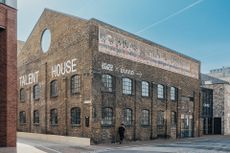 Talent House opens in east London to nurture diverse talent in the arts
Talent House opens in east London to nurture diverse talent in the artsThe Talent House is an enclave for London’s future arts talent
By Josh Fenton Last updated
-
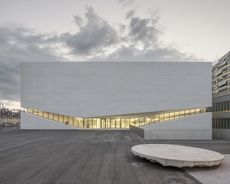 Twin cultural destination Photo Elysée and Mudac completed in Lausanne
Twin cultural destination Photo Elysée and Mudac completed in LausanneArchitecture studio Aires Mateus completes its building to house Photo Elysée and Mudac in Lausanne, Switzerland
By Ellie Stathaki Last updated
-
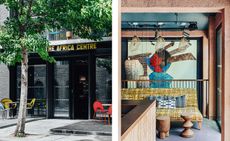 The Africa Centre reopens to celebrate culture and community
The Africa Centre reopens to celebrate culture and communityThe Africa Centre has reopened to a design by London-based architecture studio Freehaus, and is ready to support community and cultural exchange from its new Southwark home
By Ellie Stathaki Last updated
-
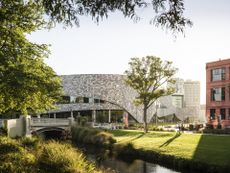 Christchurch’s Te Pae centre reopens celebrating all New Zealanders
Christchurch’s Te Pae centre reopens celebrating all New ZealandersChristchurch's Te Pae Convention and Exhibition Centre opens its doors again thanks to architects Woods Bagot and Warren & Mahoney, and arts, culture and heritage advocate Puamiria Parata-Goodall
By Ellie Stathaki Last updated
-
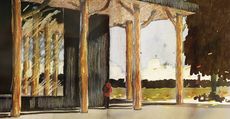 Helsinki’s Pikku-Finlandia temporary event space is a student project come to life
Helsinki’s Pikku-Finlandia temporary event space is a student project come to lifePikku-Finlandia, a sustainable, temporary wood event space, has opened to the public in Helsinki – and it’s born of the ambitious thesis of two students, Jaakko Torvinen and Elli Wendelin, featured in Wallpaper’s 2022 Graduate Directory
By Nasra Abdullahi Last updated
-
 Open architecture on building and China’s cultural landscape
Open architecture on building and China’s cultural landscapeOpen Architecture’s perfectly considered projects either disappear into the landscape or become new landmarks
By Yoko Choy Last updated
-
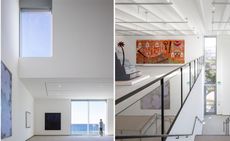 The Museum of Contemporary Art San Diego unveils a bigger and brighter new space
The Museum of Contemporary Art San Diego unveils a bigger and brighter new spaceSelldorf Architects has welcomed the elements in to the Museum of Contemporary Art San Diego’s new light-filled design
By Hannah Silver Last updated